With many seasons of growing peppers from seed under our belts, we’ve made a few mistakes… Okay more than just a few, dozens. But now we have our process down, growing beautiful plants every year.
If you’re new to growing peppers, I want to help you avoid the most common mistakes. In this article, I’ll go over 7 common pepper growing mistakes, and what you should do instead. Let’s get into it!
Mistake 1: Planting Seeds Too Early
One of the easiest ways to throw off your pepper plants is by planting too early. It is all too common for growers to get antsy in the early spring and plant seeds prematurely.
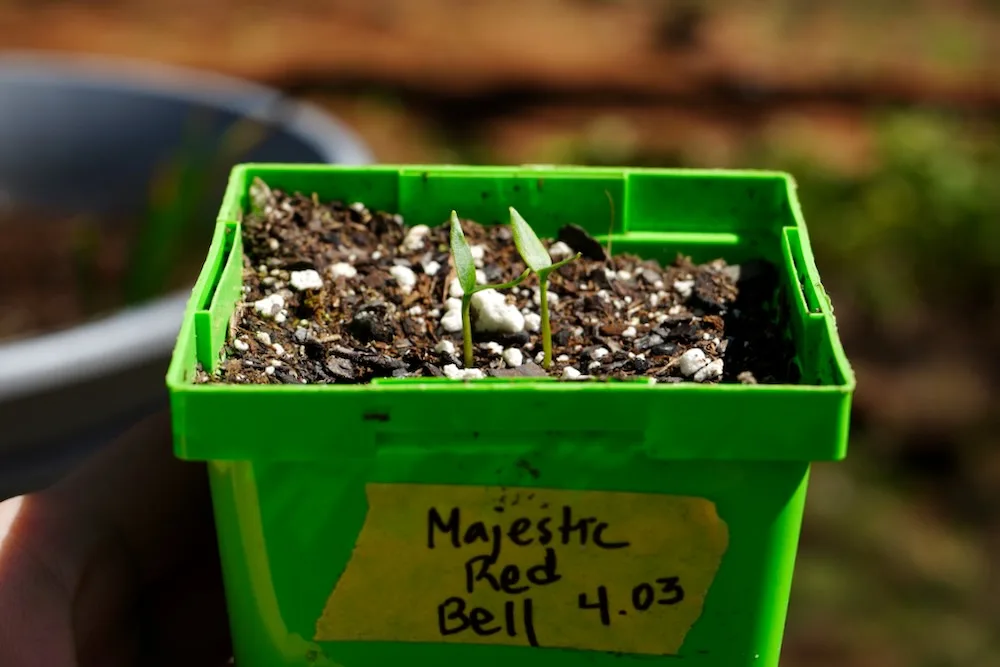
While it is important to plant pepper seeds before your last frost date, planting too early can cause a variety of issues, including:
- Overcrowding indoors
- Overgrown seedlings at transplanting time (root bound plants)
- Premature flowering
- Stunted growth after transplanting outdoors
While planting too late can also be a concern, believe it or not planting too early is more common. So, when is the best time to plant pepper seeds?
In general, I recommend to plant pepper seeds around 4-6 weeks before your last frost date. This gives the plants about 8 weeks of growth before they are ready to be moved outside.
In colder climates, there is less forgiveness, so planting slightly early is okay. In warmer climates, you have a lot more wiggle room. For more info, read about when to plant pepper seeds in each hardiness zone here.
Mistake 2: Using The Wrong Container Size
If you plan to grow your peppers in containers, the final pot size is critical to overall yield. In general, most peppers require at least 5 gallons (~19 liters) of soil space to provide a good harvest.
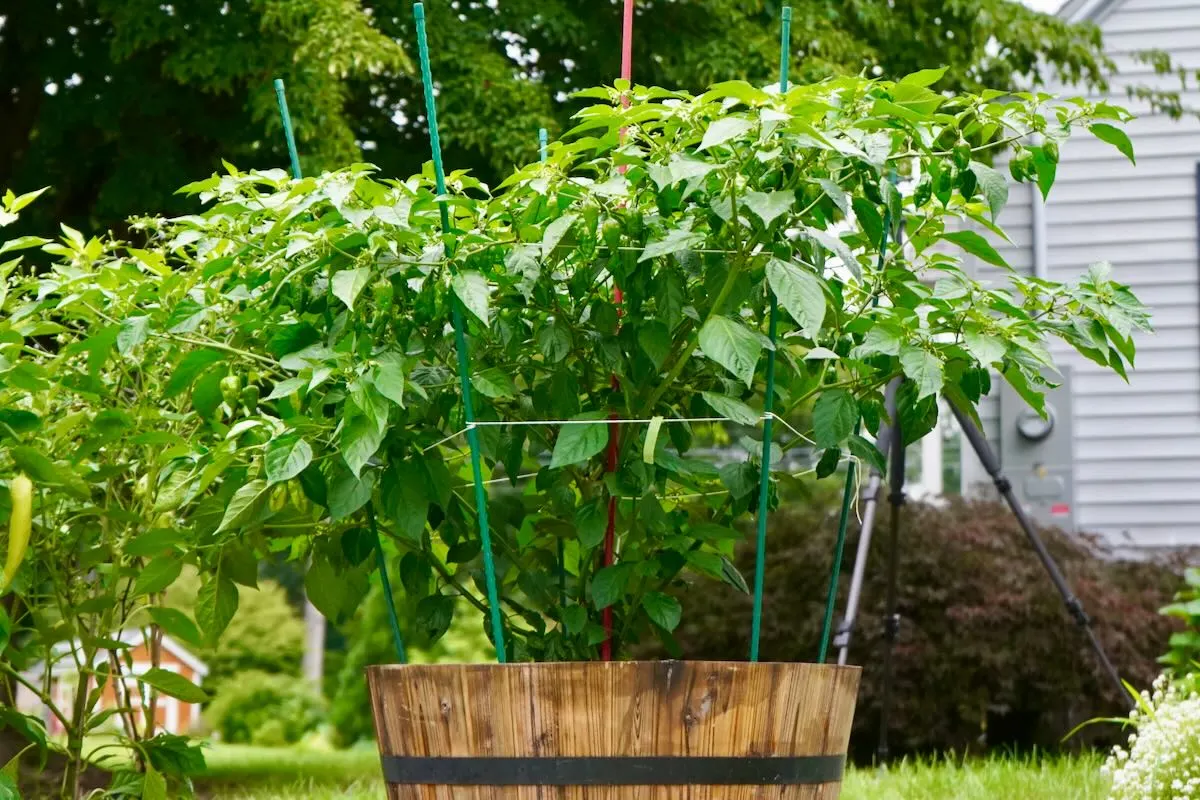
If you want your pepper plants to remain smaller, then using smaller containers is a great way to keep plants compact. Just remember that the overall size of the plant will directly relate to the amount of fruits it can support at any given time. In other words, bigger plants mean bigger yields.
Also, some pepper varieties are better suited for container growing than others. Find some of the best peppers to grow in pots here.
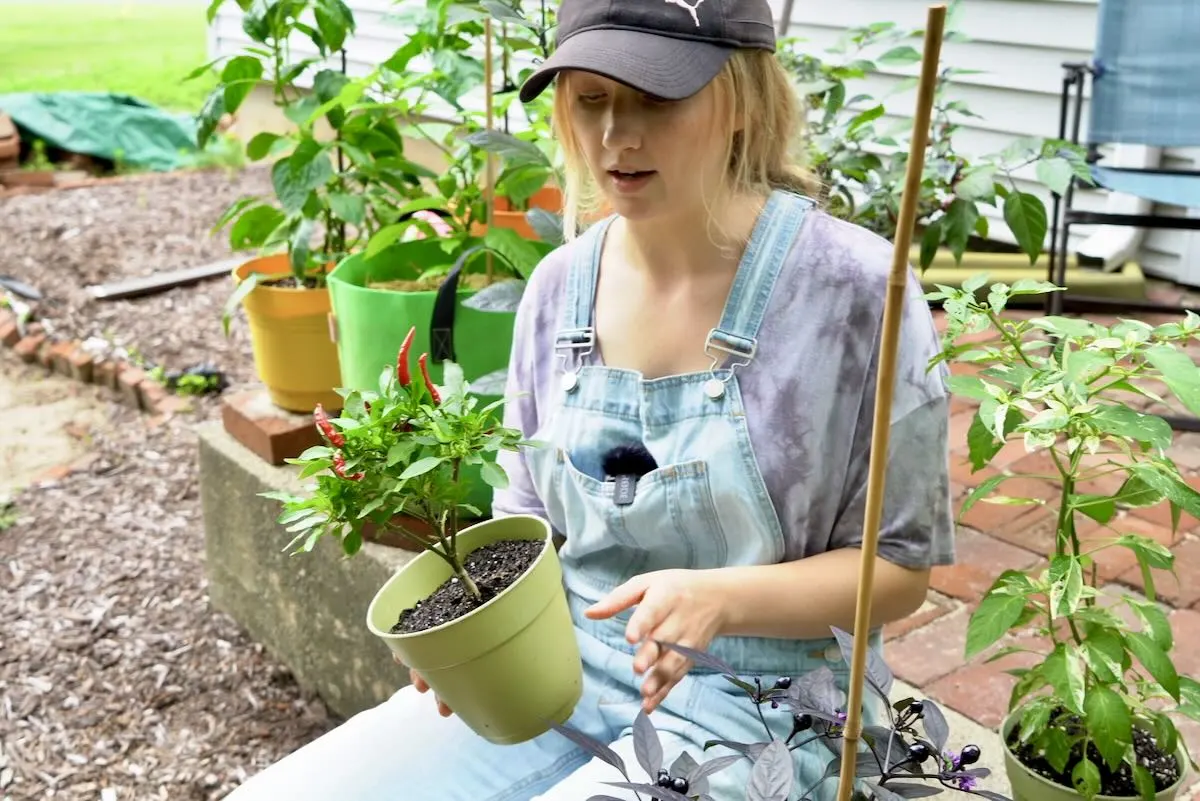
Mistake 3: Overwatering
Pepper plants grow best in a well-draining soil medium that has even moisture. In other words, not too wet, and not too dry. If your soil becomes waterlogged, the plant roots will have difficulty accessing oxygen, leading to problems.
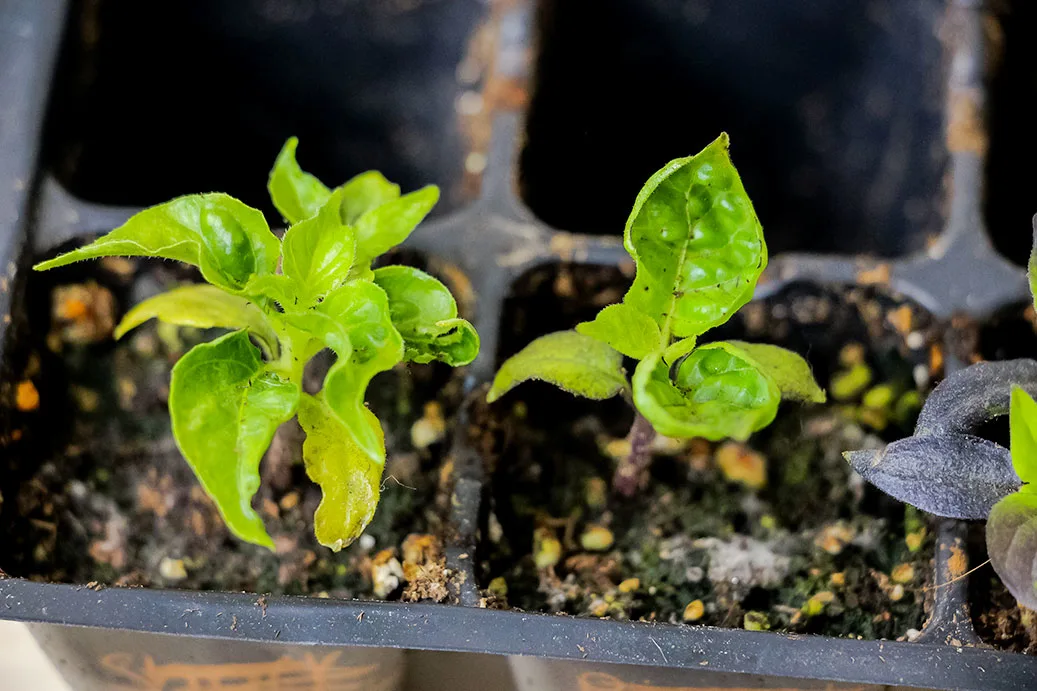
For example, if you notice wilting pepper leaves that don’t resolve after watering, you may be watering too much. Other common symptoms include curling leaves, algae on the soil surface, and fungus gnats. Learn more about how the signs of overwatering here.
- In pots, it’s best to allow the soil to dry out a bit between watering, and always make sure your pots can drain freely. Thankfully, it is fairly difficult to overwater potted plants.
- In-ground soil that does not drain well can be a much more serious issue. Clay-heavy soils tend to hold water. If your ground soil is prone to poor drainage, consider adding compost and other organic amendments to improve the soil’s aeration and drainage over time. As a short term solution, you can grow peppers on top of pre-built mounds, helping elevate the root systems.
Mistake 4: Planting In The Shade
If you don’t have at least partial sunshine where your peppers can grow, you may need to find a new location. While peppers can grow in part-shade, they will perform best in full-sun conditions, all season long.
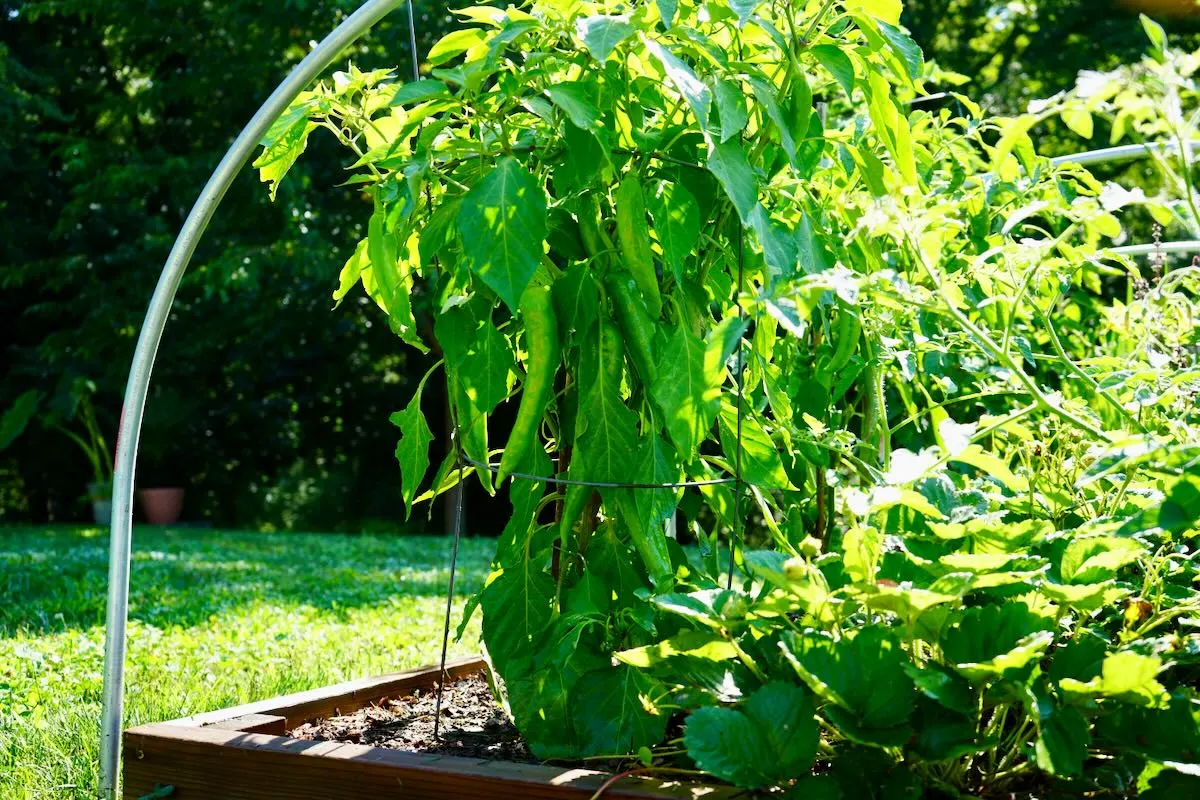
This is one of the primary causes of low yields. Plants that don’t have access to plenty of light will simply not have the energy required for fruit production.
Tip: If you grow in a very hot climate, afternoon shade may be helpful to avoid heat stress. In this case, shade cloth can actually help increase yields.
So, if you notice larger leaves, flower drop, and low-yield, your plants may just need to be moved to a sunnier location. However, don’t be discouraged if you only have a West or East facing spot – this can be plenty to grow most peppers!
Mistake 5: Not Hardening Off
Pepper seedlings that are started indoors need a gradual transition outside. Sunlight, wind, and rain are all new factors that indoor plants need to adjust to.
If you skip this process, known as hardening off, the plants may suffer damage like leaf scorch or even broken stems. A gradual transition helps avoid these potential setbacks.
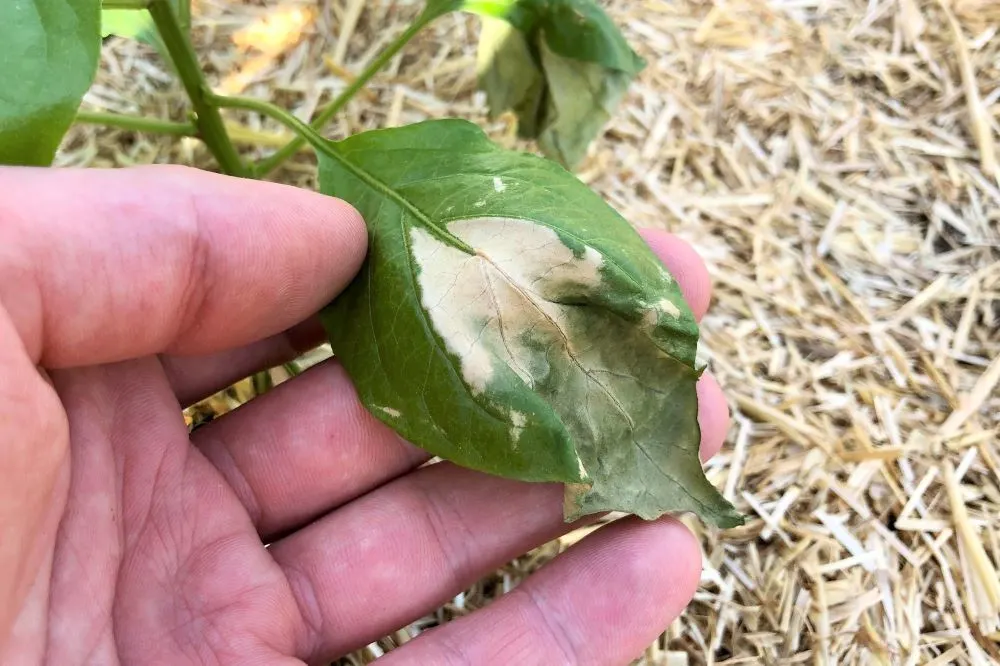
When the outdoor temperatures reach the upper 60s Fahrenheit during the day, start hardening off your peppers. This involves bringing the plants outdoors for a set time, and bringing them back inside for the rest of the day.
On day 1, it is ideal to start on a cloudy day to avoid direct sunlight, or place the plants in the shade. Increase outdoors time by 30-60 minutes daily until the plants are accustomed to the outdoors, usually within 2 weeks.
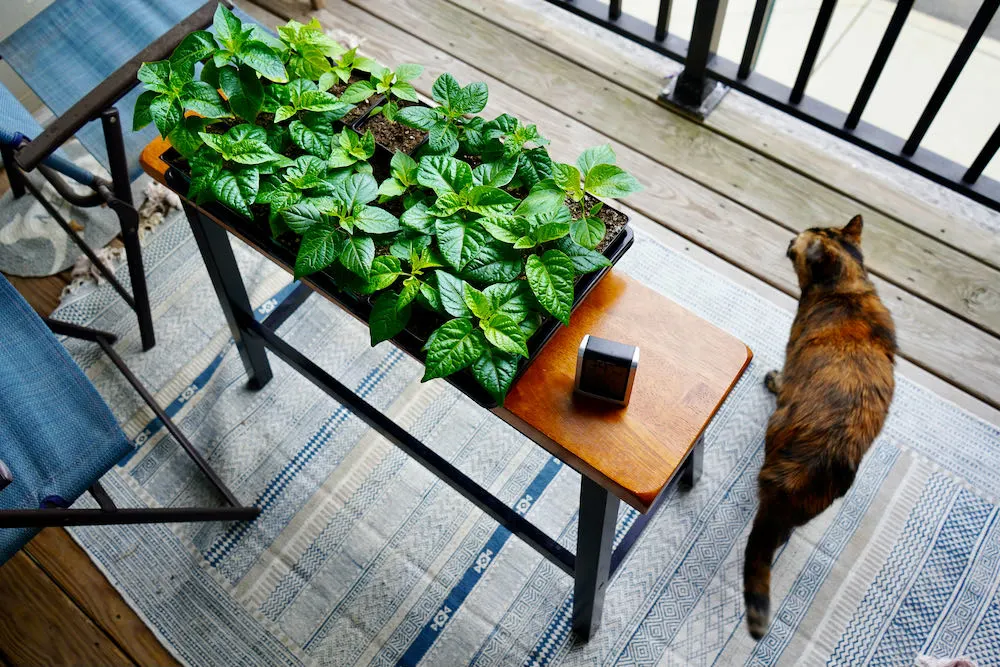
Mistake 6: Not Mulching
One of the most commonly overlooked gardening techniques is mulching. Natural mulches, like shredded leaves, straw, and dried grass clippings, provide a host of benefits to peppers.
Benefits of mulching:
- Weed suppression (little or no weeding)
- Better water retention and drought resistance
- Prevents soil splashing, reducing soil-borne disease
- Slowly adds nutrients to soil as it breaks down
- Prevents soil erosion
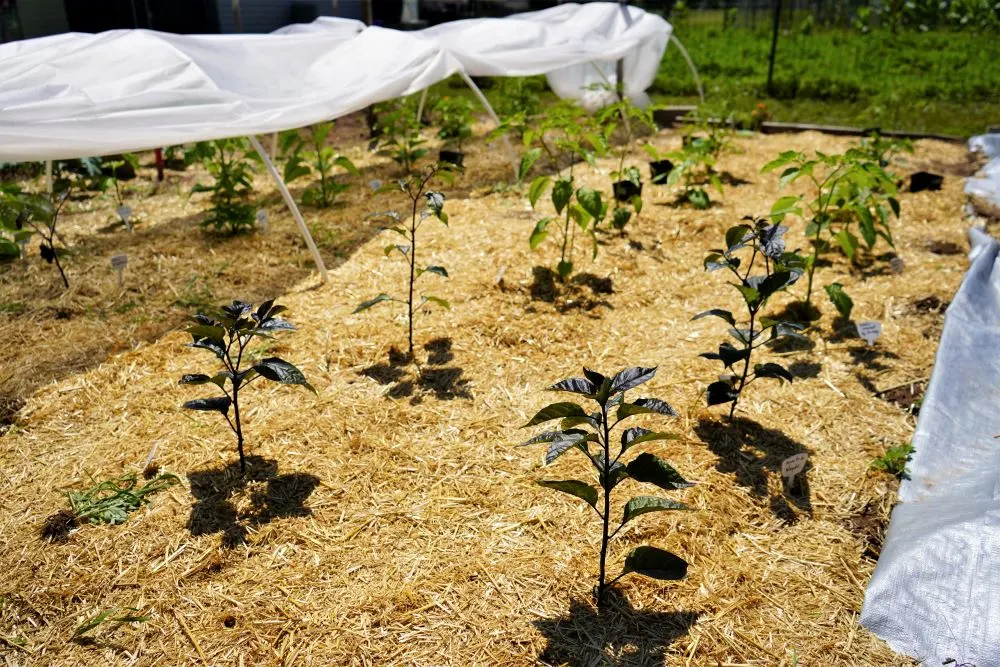
Add a thick layer of mulch, around 3″ or deeper, to completely suppress weeds and protect the soil. While there are a few drawbacks, such as providing a cover for certain pests, I believe the benefits outweigh them.
Tip: My favorite form of mulch is leaf mulch, as it is free, easy to find, and comes in an endless supply if you have deciduous trees.
Mistake 7: Harvesting Too Late
When it comes time to pick your peppers, it is always best to harvest right away. When you leave peppers on the plant, they are vulnerable to pests and disease, and usually begin to soften as they age.
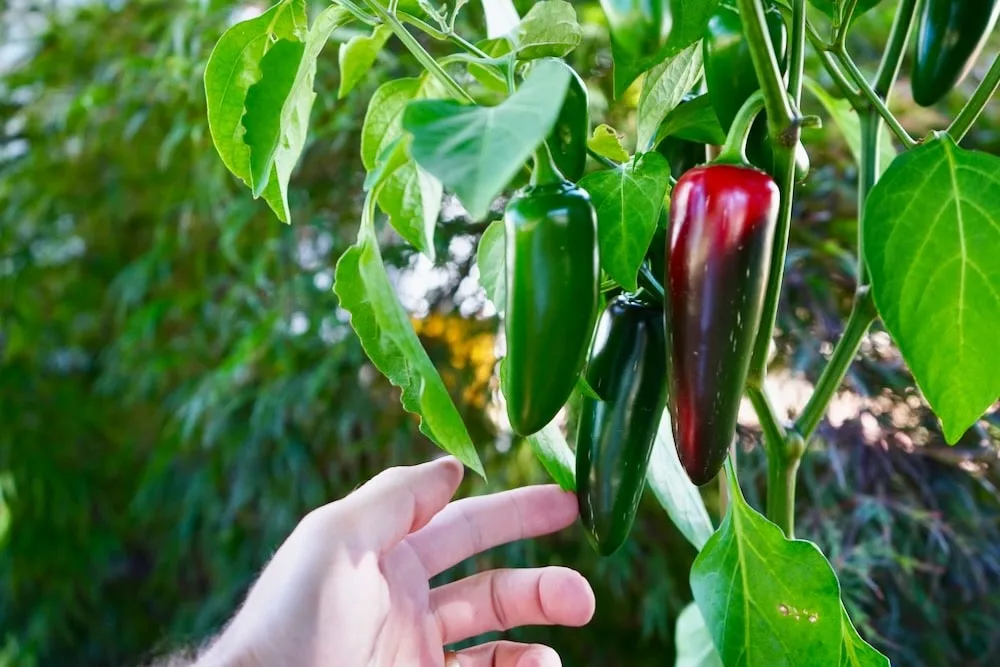
Instead, pick your peppers as soon as they are ready, or when they change color. This will allow the plant to redirect energy towards more fruit production, and your peppers will have the optimal flavor.
Note: If you grow hot peppers, it is generally best to harvest just when the peppers ripen for the highest heat level. Capsaicin production declines after ripening.
More pepper growing mistakes (video):
I hope this article helps you avoid some of the biggest pepper growing mistakes. Remember, every season is different, so spending time in the garden and watching your plants is the best way to keep them happy and healthy.

